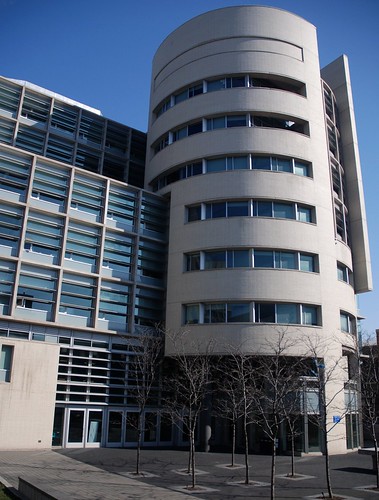I have always thought that modernism in its first incarnation, when it reigned completely supreme, formed part of a logial reaction to the recent and traumatic past in the west of the double world wars, the holocaust, the ABomb, and the depression. Though the precedents of modernism were around in the 1920's, it only became dominant after the war when people looked around and saw fusty old buildings that went 20 years without upkeep and they decided, not surprisingly, on a style that was spare, modernistic, and forward looking. US, from your descriptions of arriving in Toronto in the 1960's from Britain and seeing this modern city unfolding before you, it's clear you also had a personal and positive reaction to the style.
Now it's 2009, and for a few decades we have existed with less optimism, we are worried about the future and feeling bruised about our prospects. It is not surprising that there more options have entered our stylistic vocabulary, including buildings that incorporate postmodern references, buildings that are completely historicist and backward looking, clean modernist buildings, and buildings that I would group together into something unnamed that is past pure modernism: buildings that play with decorative influences (like Murano or the building in Kitchener) or which embody shapes that are striking and represent something new that is yet to be well defined (like the ROM, the AGO additions, or the new social housing units on Richmond). It can incorporate decorative elements or emphasize the building as a sculptural object. This is not modernism, though it arises out of it, and isn't a reaction to it.
My own preference is for modernism, but even more than that I like the sculptural that is around us, and have travelled great distances to see examples of it.
I'm less fond of the reactionary styles, especially when they are so damned humourless, like Stern or Cheddington.
I assume that if our current economic malaise morphs into cycles of deflation and hyper-inflation, combined with energy scarcity and unexpected turbulence from climate change, that our architectural styles will adapt to that reality as well. In that case, I will look on modernist buildings as beautiful, spare instances reflecting their age. I don't for a moment imagine that we have reached "the end of history" of architectural styles.









